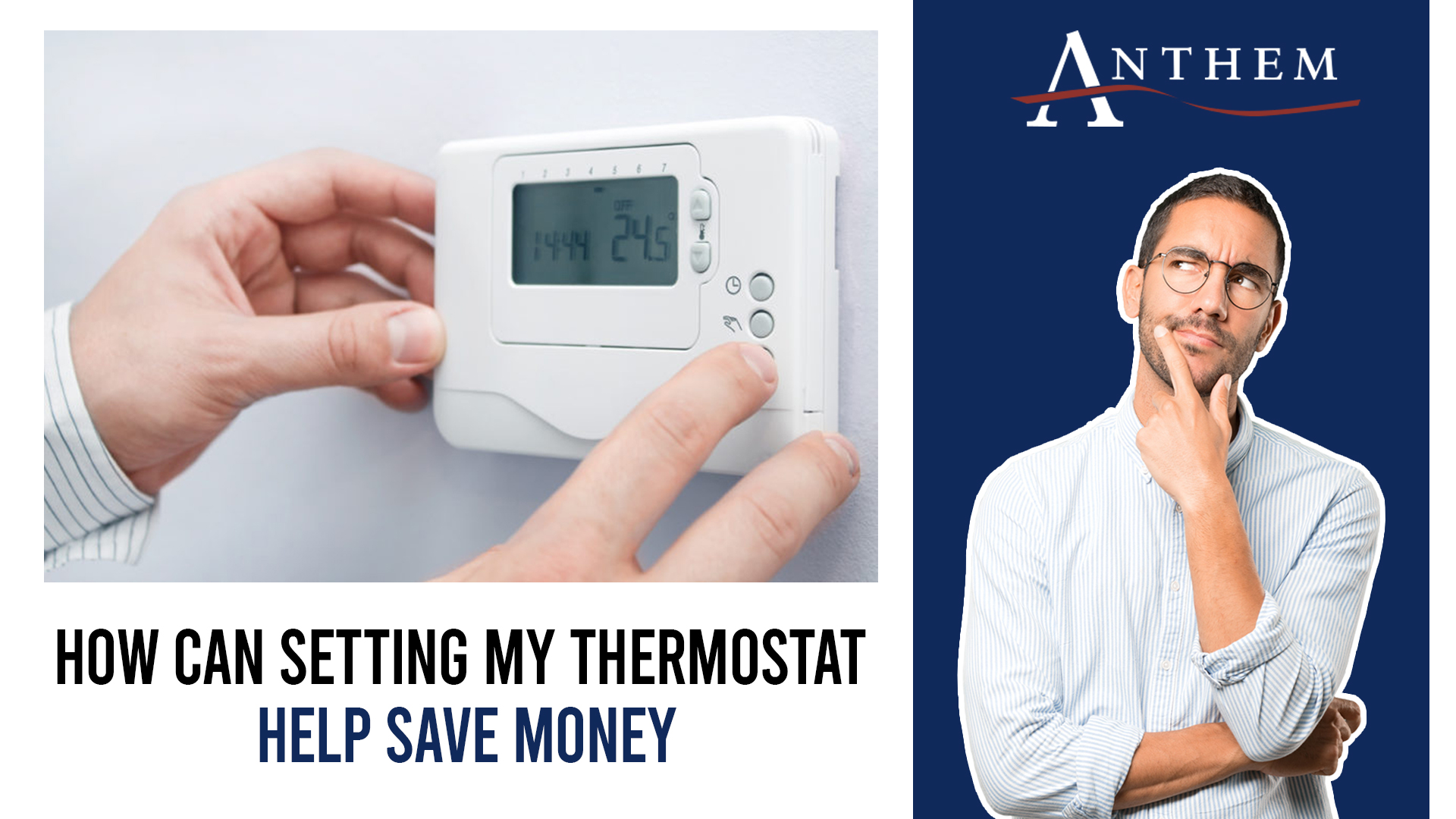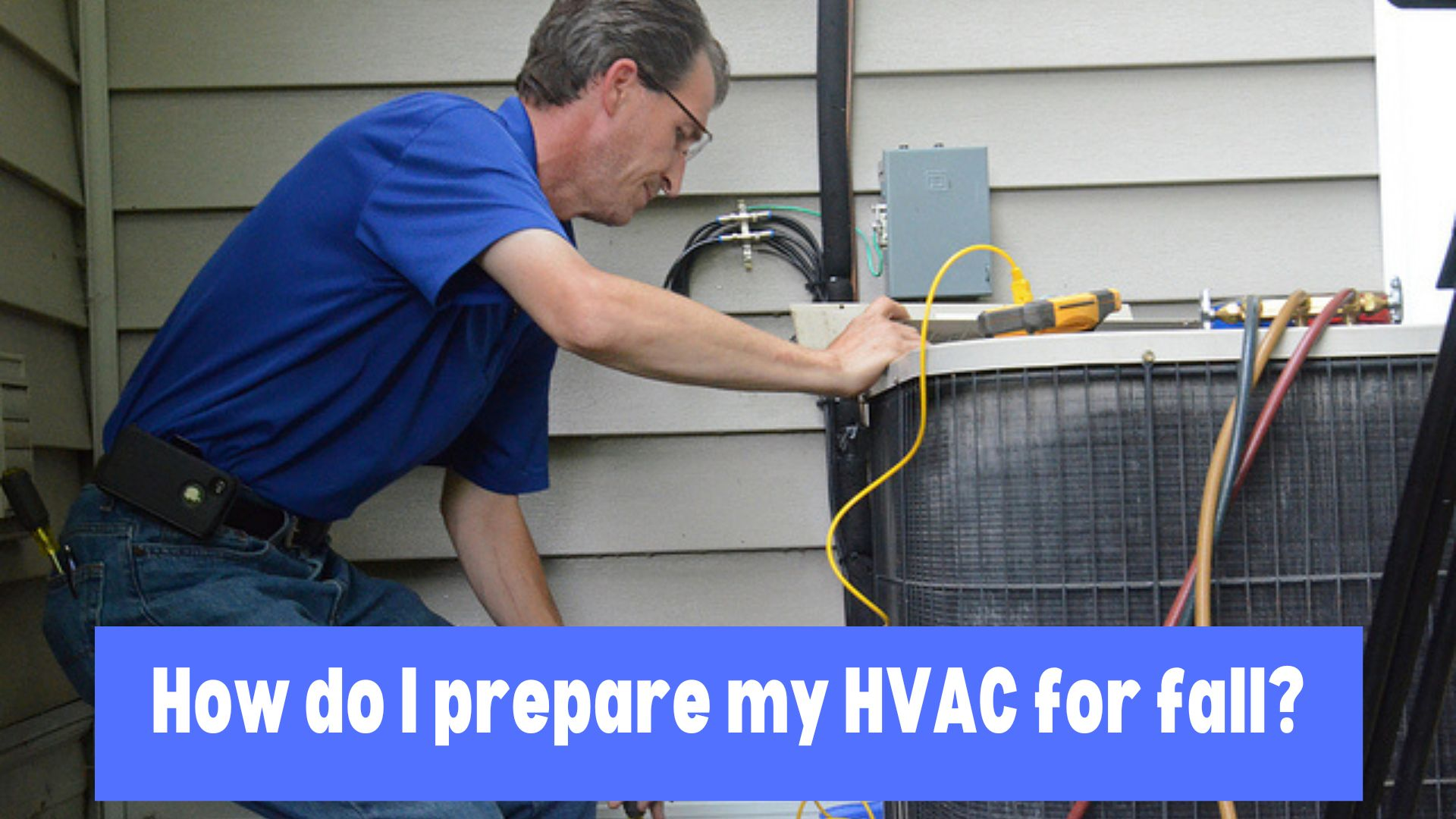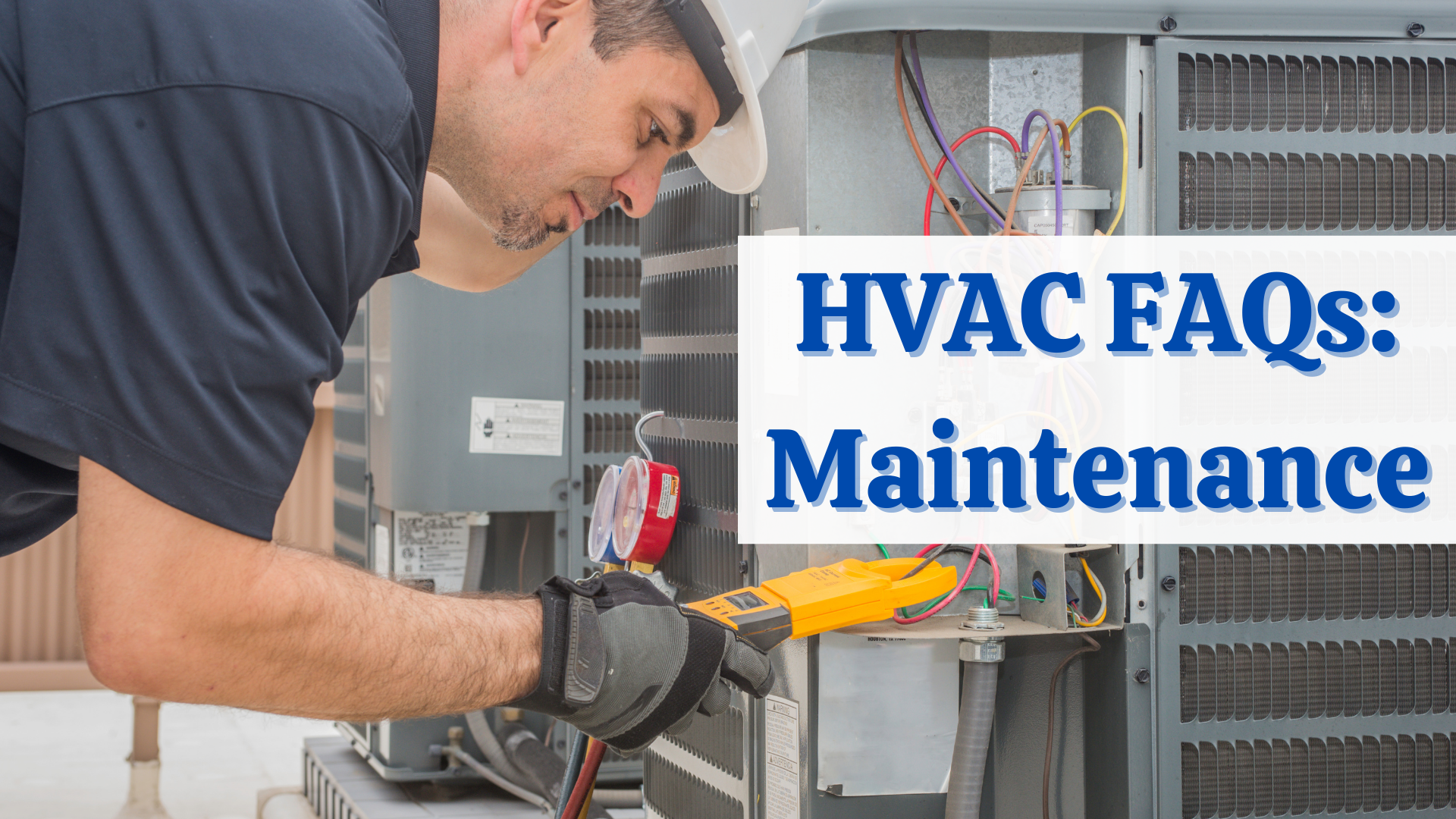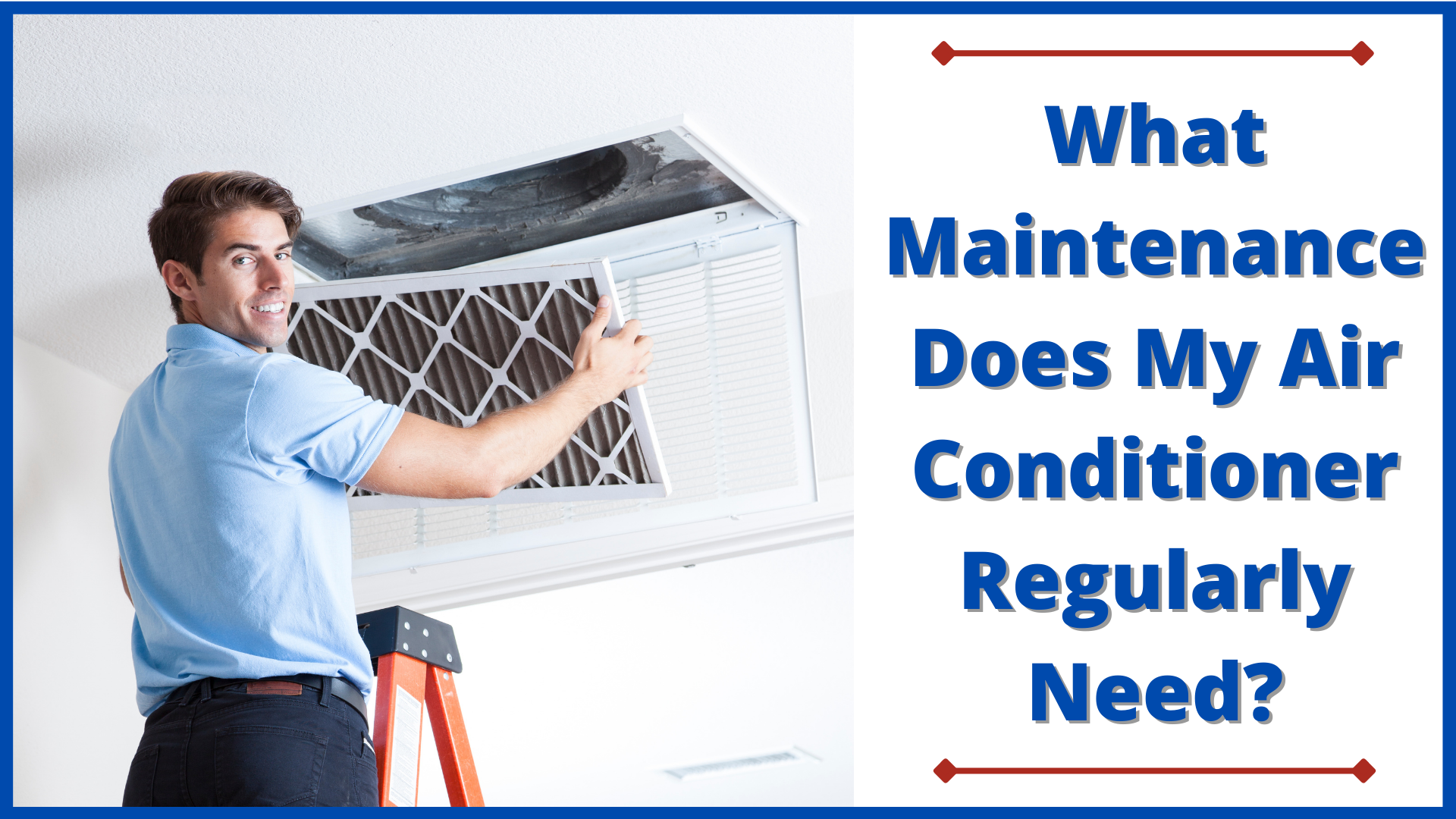Unravel the mystery of HVAC! Discover what it stands for, its vital role in your home, and tips to boost air quality and energy efficiency.
Continue readingUnderstanding Energy Ratings for Coachella Valley Homes
Understanding energy ratings is essential for homeowners in the Coachella Valley who want to make informed decisions about their home’s energy performance. By understanding energy ratings, homeowners can make informed decisions that may result in lower utility bills and a reduced environmental footprint.
In this blog post, we will delve deeper into various types of energy ratings such as SEER (Seasonal Energy Efficiency Ratio), AFUE (Annual Fuel Utilization Efficiency), and ENERGY STAR. We’ll also discuss how these rating systems are developed by organizations like the Residential Energy Services Network and how they take into account different factors like heating, cooling, water heating, and other energy sources.
Finally, understanding energy ratings can help you choose the right products for your home that meet or exceed industry standards. Stay tuned to learn more about selecting the best options for optimizing your home’s overall efficiency.
Table of Contents:
- What is SEER Rating?
- Understanding SEER Ratings
- What is AFUE Rating?
- What is ENERGY STAR Rating?
- Frequently Asked Questions Understanding Energy Ratings
- Conclusion
1. What is a SEER Rating?
The SEER rating is a measure of the efficiency of an air conditioning system, calculated by dividing its cooling output during a typical season by the total energy input in watt-hours. In simpler terms, it tells you how much cool air your air conditioner can produce per unit of electricity consumed.
A higher SEER rating indicates better energy efficiency and lower operating costs for homeowners in the Coachella Valley. The U.S. Department of Energy has set minimum standards for SEER ratings depending on geographical location; however, these values may change over time as technology advances and new regulations are introduced.

Understanding SEER Ratings
- Minimum requirement: As of January 2015, newly manufactured central air conditioners must have a minimum SEER rating of 14 or higher for regions like Coachella Valley that fall under Zone 3 (U.S. Climate Zones Map). This ensures improved energy efficiency compared to older models with lower ratings.
- Better performance: Air conditioners with higher SEER ratings typically perform better than those with lower ratings when it comes to maintaining comfortable indoor temperatures while using less electricity.
- Savings potential: Investing in an AC unit with a high SEER rating can lead to significant savings on your monthly utility bills due to reduced power consumption without compromising comfort levels inside your home.
- Eco-friendly choice: Choosing an AC system with a high SEER rating not only saves you money but also contributes to reducing greenhouse gas emissions and conserving natural resources by using less electricity.
When selecting an AC system, it is important to bear in mind the SEER rating. Keep in mind that while higher-rated units may have a higher upfront cost, they can save you more on energy bills over time and provide better overall performance. Additionally, many energy-efficient AC systems qualify for rebates or tax credits, further offsetting their initial costs.
Understanding the SEER rating is important for homeowners to make informed decisions when purchasing an HVAC system. Let’s examine the AFUE rating and how it can influence your energy efficiency.
What is AFUE Rating?
The Annual Fuel Utilization Efficiency (AFUE) rating measures the efficiency of a furnace in converting fuel to energy. This rating helps homeowners in the Coachella Valley understand how well their heating system performs and make informed decisions when purchasing or upgrading their furnaces.
How AFUE Ratings Work
An AFUE rating is expressed as a percentage representing the ratio of heat output to the energy consumed by your furnace. For example, an 80% AFUE-rated furnace means that for every dollar spent on fuel, 80 cents are used to heat your home, while the remaining 20 cents are wasted through inefficiencies such as heat loss from ductwork or exhaust gasses.
Furnace Types and Their Typical AFUE Ratings
- Older low-efficiency furnaces: These models typically have an AFUE rating between 56% and 70%. They may still be functional but will consume more energy than newer high-efficiency models.
- Mid-efficiency furnaces: With ratings ranging from 80% to 83%, these units offer better performance than older models but may not provide optimal savings on utility bills compared to high-efficiency options.
- High-efficiency condensing furnaces: Boasting impressive ratings between 90% and over 98%, these modern systems use advanced technology like sealed combustion chambers and secondary heat exchangers to minimize waste, maximizing both comfort levels and cost savings for homeowners.
The Importance of Choosing a Furnace with a High AFUE Rating
Investing in a furnace with a high AFUE rating offers several benefits for homeowners, including
- Lower energy bills: A more efficient furnace uses less fuel to generate the same amount of heat, resulting in lower monthly utility costs.
- Better comfort and indoor air quality: High-efficiency furnaces often have advanced features like variable-speed blowers and multi-stage burners that provide consistent temperatures and improved humidity control throughout your home.
- Eco-friendly operation: By reducing energy consumption, you’re also decreasing greenhouse gas emissions associated with burning fossil fuels – making your home more environmentally friendly.
- Potential rebates or tax credits: Some local utilities or government agencies may offer incentives for upgrading to an energy-efficient heating system. Be sure to check if any such programs are available in Coachella Valley before purchasing a new furnace.
Selecting the right AFUE-rated furnace is crucial for maximizing efficiency and cost savings while maintaining optimal comfort levels within your Coachella Valley home. Consider consulting an experienced HVAC professional who can help guide you through this process based on factors like climate conditions, house size, insulation levels, and budget constraints.
AFUE ratings provide a helpful measure of the efficiency of an HVAC system, so homeowners can make informed decisions when selecting one. Let us investigate the ENERGY STAR ratings to discover how they can be employed for recognizing energy-efficient systems.
3. What is ENERGY STAR Rating?
The ENERGY STAR rating is a voluntary program initiated by the U.S. The ENERGY STAR rating is a program of the EPA and DOE that recognizes products that have met their stringent energy efficiency requirements, allowing consumers to purchase items with lower energy consumption than typical models. Products that meet strict guidelines for energy efficiency are awarded the ENERGY STAR label, which signifies they use less energy than standard models without compromising performance.
A. How Does an Appliance Earn an ENERGY STAR Label?
To earn the prestigious ENERGY STAR label, appliances must undergo rigorous testing and meet specific criteria set forth by the EPA and DOE regarding energy consumption and performance levels. These criteria include:
- Energy efficiency: The product must be significantly more efficient than non-certified models while maintaining or improving overall performance.
- Cost-effectiveness: The upfront expense of obtaining an ENERGY STAR-certified device should be recouped over time through decreased energy consumption, thus resulting in savings on electricity bills.
- Certification: All claims regarding a product’s energy efficiency must be verified through third-party testing conducted according to established protocols.
B. Benefits of Choosing ENERGY STAR Rated Appliances

Purchasing appliances with an ENERGY STAR rating offers numerous benefits for homeowners in Coachella Valley:
- Lower Utility Bills: By using less electricity or natural gas, you can save money on your monthly utility bills over time.
- Better Performance: In addition to being more efficient, many times, these products also offer improved features compared to their non-certified counterparts – such as quieter operation or advanced temperature controls.
- Environmental Impact: Using energy-efficient appliances helps reduce greenhouse gas emissions and other pollutants, creating a cleaner environment for future generations.
- Potential Rebates or Incentives: Some local utility companies offer rebates or incentives for purchasing ENERGY STAR-certified products. Check with your provider to see if any rebate or incentive programs are available nearby.
C. Comparing ENERGY STAR Ratings with SEER and AFUE Ratings
While both the SEER rating for air conditioners and the AFUE rating for furnaces provide valuable information about an HVAC system’s efficiency, they do not always guarantee that a product is eligible for the ENERGY STAR label. To ensure you’re selecting an appliance that meets all of these stringent requirements, look specifically for products bearing the recognizable blue-and-white ENERGY STAR logo.
In summary, understanding energy ratings like SEER (for air conditioners), AFUE (for furnaces), and ENERGY STAR can help homeowners make informed decisions when it comes to choosing efficient HVAC systems. By investing in high-efficiency equipment, you’ll enjoy lower utility bills, improved performance, and reduced environmental impact – ultimately creating a more comfortable living space in Coachella Valley homes.
Considering ENERGY STAR rankings when buying a new HVAC system is essential, and understanding the energy rating possibilities can assist you in making an educated selection. To further your knowledge on this topic, let’s explore how to choose the right energy ratings for your home.
Frequently Asked Questions Understanding Energy Ratings
Which is the better energy rating, A or F?
An energy rating of A is significantly better than an F. Rating A represents the highest level of efficiency, while F indicates the lowest efficiency. Choosing appliances with higher ratings, like A, will lead to lower energy consumption and reduced utility bills.
What is the explanation of energy ratings?
Energy ratings are a standardized system that measures the efficiency of various appliances and systems in your home. They help homeowners compare different products based on their performance, allowing them to make informed decisions when purchasing new home equipment. Higher-rated products consume less energy, resulting in cost savings and environmental benefits.
What is the 5-star energy rating?
A 5-star energy rating signifies that an appliance or product has excellent efficiency levels compared to other models within its category. The more stars a product has, up to five stars maximum, the more efficient it operates – leading to decreased power usage and potential savings on utility bills.
How do you read energy performance ratings?
To read an Energy Performance Rating (EPR), look at labels provided by organizations such as ENERGY STAR. These labels display information about annual operating costs, estimated yearly electricity use, and comparative data with similar models so consumers can evaluate how well a specific appliance performs regarding its overall efficiency.
What is the difference between a 4-star and a 5-star energy rating?
The primary difference between a 4-star and a 5-star rated appliance lies in their respective efficiencies; higher-rated devices perform better than those with lower scores. Specifically, a device with a 5-star rating consumes less power during operation compared to one rated at four stars – resulting in greater energy savings and reduced environmental impact.
Conclusion
Grasping the energy classifications is necessary when selecting an HVAC system for your residence. SEER, AFUE and ENERGY STAR ratings are all important factors that should be considered before making a purchase. Doing research on these rating systems will help you make an informed decision about which type of system best suits your needs and budget. Investing in a high-efficiency HVAC unit can save you money over time by reducing monthly utility costs while helping protect our environment from unnecessary emissions.
Take control of your energy costs today and get the most out of your HVAC system with our expert advice on understanding energy ratings. Get started now to save money and improve efficiency!
HVAC Problems and Troubleshooting for Winter in Palm Springs
It’s wintertime in Palm Springs, and the HVAC can be tricky to work with. From air conditioners not working properly to temperatures that just won’t stay consistent – it can be a challenge for homeowners across the area. Fortunately, you don’t have to suffer through these common HVAC problems anymore. In this blog post, we’ll tell you how to troubleshoot common issues in your Palm Springs home so you can keep things running smoothly throughout the cold season. So gear up and get ready – let’s take a look at some of the most common HVAC problems and solutions.
Decreased Air Flow from Vents
Decreased airflow from the vents in your home can be a major inconvenience, especially during the cold winter months. When airflow is decreased, it means that the temperature of your house won’t stay consistent, and you may find yourself feeling cooler than usual in certain areas of your home. This can also lead to increased energy costs as your HVAC system has to work harder to maintain temperatures throughout the house. Not only that, but you could end up with dust and allergens settling in rooms where there isn’t enough air circulation. All these problems together create an unpleasant environment for anyone living inside a home with decreased airflow from their vents.
For homeowners dealing with decreased air flow from their HVAC, there are several steps you can take to address the issue. First, make sure that all of your vents and registers are open and unobstructed by furniture or other objects. Second, check that your filters have been recently changed, as dirty filters can reduce airflow in your home. Finally, inspect the ducts for any blockages or obstructions which could be impacting airflow. If needed, contact a professional HVAC technician who can help diagnose and fix any underlying issues with your system. By taking these steps, you should be able to resolve any issues related to decreased airflow from your HVAC system.

Insufficient Heated Air from the Furnace
When your furnace isn’t providing enough heated air, it can be a frustrating and uncomfortable experience. Not only is the temperature in your home inconsistent, but you may find that certain rooms are too hot while others remain cold. This can lead to high energy costs as your system has to work harder than usual to attempt to regulate the temperatures. Additionally, inadequate heating from the furnace could cause damage to pipes or other parts of the HVAC system if not addressed quickly.
If this is happening to you, perform a thorough check to make sure your furnace is running as it should. Check the thermostat to ensure it is set to the correct temperature. Next, inspect your furnace filter; if any signs of damage or buildup are detected, you must replace it right away. Examine your blower motor to guarantee proper operation and inspect all ductwork for any leaks or blockages that could prevent heated air from reaching your living area. If you’re unable to resolve the issue by following these steps, contact a qualified HVAC technician immediately. Don’t let insufficient heat affect your comfort this Palm Springs winter.
Frozen Pipes
When the temperatures outside drop, your pipes may be at risk of freezing. When this happens, it can cause a host of problems throughout your home and in your HVAC system. Frozen pipes can lead to burst pipes, which can result in costly water damage repairs that could have been easily avoided with proper maintenance. Additionally, frozen pipes can also prevent hot water from reaching its destination – meaning you won’t be able to get warm showers or baths when it’s cold outside.
To prevent your pipes from freezing, be sure to keep your thermostat at the same temperature throughout the day and night. Furthermore, insulating exposed pipes in places like the attic, basement, or crawl space is key in defending against cold climates. Additionally, seal any cracks or gaps in your home’s exterior to minimize the flow of chilly air into the house and disconnect any hoses from outdoor faucets before temperatures drop too low. Last, adjust your ceiling fans to rotate at a low speed clockwise. This will aid in circulating warm air near the floor as an additional precautionary measure against frozen pipes.

Condensation on Ducts and Windows
Condensation on your ducts and windows is an indicator of poor insulation in your home. When moisture builds up, it can be caused by a variety of factors, including high humidity levels, improper ventilation, or even leaking pipes. This condensation can cause structural damage to the walls and ceilings as well as create an environment where mold and mildew can thrive.
To prevent this from happening, you should ensure that all areas of your home are properly insulated and ventilated, so that excess moisture doesn’t build up on surfaces like ducts or windows. If needed, contact a professional HVAC technician who can help diagnose any underlying issues with your system. Taking these steps will help protect against costly repairs in the future due to water damage from condensation buildup in your home.
Conclusion
From frozen pipes to inadequate heating, there are a variety of HVAC issues that can occur during the winter months in Palm Springs. To ensure your system is running smoothly and efficiently, it’s important to perform regular maintenance checks, such as changing furnace filters or inspecting ductwork for leaks. Additionally, make sure you insulate exposed pipes, seal any cracks or gaps in the exterior walls of your home, and adjust ceiling fans, so they rotate at a low speed clockwise. By taking these precautions now, you’ll be able to avoid costly repairs down the road due to water damage from condensation buildup caused by poor insulation this winter season.
Tips for Staying Warm During Palm Springs’ Winter Months
Winter weather can be a challenge for many homeowners in Palm Springs. With temperatures that are often below what we would consider comfortable levels, staying warm during the winter months is essential to avoid any potential discomfort and even illnesses due to extended exposure to extreme temperatures.
Fortunately, there are several things you can do as a homeowner in Palm Springs to keep your house warm throughout these colder months so that when you return from work or an afternoon out with friends, it’s not too chilly inside your abode. This blog post will provide some useful tips and advice on keeping yourself and your residence warm during the winter season – without breaking the bank.
Invest in a Quality HVAC System
As a homeowner in Palm Springs, investing in a quality HVAC system is a must. By properly heating and cooling your home with advanced HVAC technology, you can enjoy the utmost comfort even when external temperatures change drastically during the winter months.
Studies have even shown that HVAC systems with a programmable thermostat allow you to reduce overall energy consumption, making it an economical decision as well. So don’t be left out in the cold. Take control of your indoor environment while saving money in the process.

The Power of Layers
As a Palm Springs homeowner, I can definitively say that you do not want to underestimate the power of layers. Palm Springs may appear deceptively warm, but I assure you it gets surprisingly cold during the winter months. Whether you are stepping out your door or heading into town, make sure you layer up with something substantial like wool or cashmere if you want to stay warm and comfortable. This bit of advice will undoubtedly prove invaluable through the chillier seasons in Palm Springs.
Seal Out Drafts
Palm Springs homeowners need to be aware that the windy winter months can bring an unwelcome chill into their homes if they’re not prepared. Keeping your windows and doors securely shut is essential in retaining the desired temperature in your living space. A tightly sealed home will leave you feeling cozy and warm, allowing you to enjoy Palm Springs all year round without breaking a sweat. Make sure it remains that way by always double-checking your seals for holes or drafty spots.
Use a Space Heater
If you’re a Palm Springs homeowner and it’s incredibly chilly inside, look no further than the trusty space heater. These heaters are your best bet to stay warm and cozy this winter season. Just place one in whatever room you’re in, and soon you’ll feel like you’ve been transported to Palm Springs’ lovely sunnier days. All jokes aside, be sure to use your space heater safely. It will never do any good if it causes a fire instead of keeping you warm. So be sure that, while they are running, they remain attended so that your home stays safe and comfortable.

Drink Hot Beverages
Palm Springs homeowners certainly know the importance of understanding the season’s changing weather patterns, and drinking warm beverages during Palm Springs’ winter months is a great way to stay comfortable while enjoying some of the area’s best attractions. Tea it up with a piping hot cup of English tea, or power up with a steaming mug of coffee. Don’t forget to add that extra shot of espresso. Even better, indulge in a chocolatey treat to help fight off old man Winter. Not only will these delicious options keep you warm, but they’ll also give your energy level a much-needed boost.
Conclusion
Even though it doesn’t seem like there’s a big difference between the temperatures in Palm Springs during winter and summer, residents know that the cold can be unbearable without some extra warmth. By following these tips, you’ll make it through the season while barely breaking a sweat. And if you have any questions about your HVAC system or need help maintaining it, don’t hesitate to give Anthem Heating & Air Conditioning a call. We’re happy to help our customers stay comfortable all year long.
Are Heat Pumps Effective in the Desert?
If you’re a desert homeowner, you know that temperatures can often soar far beyond sweltering levels. Keeping your home comfortable during these times is important, and finding the right tool for the job can seem daunting. Heat pumps are a popular solution as they can extract heat from the outside air to keep your house cool indoors, but are they truly effective in the desert climate?
In this blog post, we’ll explore why heat pumps could be the perfect fit for keeping cool in hotter regions and some potential drawbacks. We hope to help you make an informed decision about which system best meets your needs. Read on to find out more about how heat pumps work in deserts.
How Heat Pumps Work
Heat pumps are an increasingly popular choice for home heating and cooling. They work by extracting heat from one area and transferring it to another. In the summer, heat is extracted from the inside of your home and released outside, cooling it off. Conversely, in winter, heat is extracted from the outside air and released inside your home, heating it up.
It does this using refrigerant fluid which passes through a series of components such as an outdoor heat exchanger and indoor air handler to facilitate the heat exchange. Heat pumps can help you save money on operating costs due to their efficiency relative to other heating systems. This makes them an attractive choice when selecting a heating and cooling system for your home.

Heat Pumps for Desert Homes
Heat pumps are designed to extract warmth from the outside air and transfer it inside. This process is highly effective in cooling down a home, but how does this work in hot climates? Heat pumps utilize something called a “reverse cycle” when operating in temperatures above 75°F. This means that instead of transferring warm air indoors, they actually absorb heat from the outdoor environment and pump it out of your house. It’s like having an AC unit that can both cool and heat your house, depending on the climate.
The biggest advantage of using heat pumps in desert regions is their energy efficiency. Since these systems use the ambient temperature outdoors to cool down your home, you may save money on electricity bills compared to other options. Plus, heat pumps require minimal maintenance and can last for up to 20 years when properly cared for.
However, heat pumps may not be the best solution for everyone in the desert. Some heat pump systems, depending on their size and the size of the home, cannot effectively cool down a home without running continuously. Because of this, they could end up costing more money than other air conditioning units if used incorrectly. Additionally, heat pumps struggle to perform effectively when temperatures drop below freezing. So you’ll need an alternate option during the winter months.
Things to Keep in Mind if Thinking about Getting a Heat Pump
Here are a few pros and cons of heat pumps compared to standard HVAC systems.
Pros of Heat Pumps:
1. Efficient
Heat pumps are one of the most efficient ways to heat and cool your home. They work by transferring heat from one place to another rather than generating new heat. This means that they use less energy than other heating and cooling methods, which can save you money on your energy bills.
2. Environmentally Friendly
Heat pumps are also environmentally friendly. Because they use less energy than other heating and cooling methods, they generate fewer greenhouse gases. This can help reduce your carbon footprint and make a positive impact on the environment.
3. Versatile
Heat pumps can also be used for a variety of purposes beyond heating and cooling your home. They can be used to heat water for your home, as well as to cool and dehumidify the air in your home. This makes them a versatile addition to any home.
Cons of Heat Pumps:
1. High Initial Cost
One of the biggest disadvantages of heat pumps is the high initial cost. Heat pumps are typically more expensive than other heating options, such as furnaces or boilers. The high initial cost can be a barrier for many homeowners, particularly those who are on a tight budget.
2. Limited Efficiency in Cold Weather
Another downside of heat pumps is that they are not as efficient in cold weather. This is because heat pumps rely on the outside air to provide heat, and the air is much cooler in winter than it is in summer. As a result, heat pumps cannot provide as much heat in winter as in summer, making them less comfortable for some people.

3. Requires Regular Maintenance
Heat pumps also require regular maintenance in order to keep them running properly. This includes tasks such as cleaning the coils and changing the filters. Additionally, heat pumps should be serviced by a professional every few years to ensure that they are operating at peak efficiency.
Conclusion
Overall, heat pumps can be an effective way of cooling your home in desert regions. However, there is no one-size-fits-all solution to staying comfortable in hot climates. Make sure you do your research before making a purchase so that you know which system is best suited to your needs. With the right heat pump, you can keep cool and save money on energy bills all year round.
If you have any questions about heating or cooling your home, contact Anthem Heating and Air Conditioning. Our goal is to help make it as easy as possible for you to acquire the right systems to make your home more comfortable and energy efficient. With this in mind, we offer a variety of financing options and can assist you with additional programs as well, such as government tax rebates and credits for efficiency-based products, including solar equipment, windows, pool pumps, and more.
When Our Smart Home Devices Are “Too Smart,” Can We Lose Control?
Smart home technology has made leaps and bounds over the past years. Smart devices have become much more capable and affordable, with user interfaces more intuitive and featuring high processing power.
According to expert analysis, the global smart home market will exceed $53 billion soon. It is obvious why smart home devices, such as smart thermostats for HVAC, are so popular.
These “too smart” devices may feel intrusive and highly complex for some consumers, especially when they break down. However, they are still a significant investment.
For instance, in 2022, around 22,000 Xcel customers were unable to adjust thermostat temperature settings due to an energy emergency. Xcel then clarified that the technical glitch was based on a subscription made by the affected customers and sought to support energy-saving requirements.
So, can we lose control when our smart home devices are too smart?
It’s All About Smart Living and Not Losing Control!
While smart devices may irritate some homeowners, it is not the same experience for everyone! Smart devices are still a significant investment.
Take, for instance, a smart thermostat that controls your heating and air conditioning unit. Why would anyone need their HVAC unit connected to a local network and more excellent internet?
This connectivity allows the user to control and interact with the unit from anywhere globally.
Besides, after leaving home, users may receive a message alerting them that they forgot to switch off the air conditioner. They can use their phone to switch off from there, so they control their heating and cooling bills.
Artificial intelligence has become mainstream, and cloud technology abundantly supports smart devices, making them a great addition to our homes.

Consumers Are Conflicted and Feel Smart Devices Are Too Creepy!
Following the Xcel case, where approximately 22,000 customers lost control of their smart thermostats, some affected homeowners expressed deep wariness about security and privacy.
Typically, customers want to enjoy the convenience of smart home devices without feeling these smart devices encroach on their personal space and data.
On the other hand, some customers still express great enthusiasm and have enormous expectations for the benefits of these smart devices.
Embracing the Subscription Economy
Concerns keep emerging as the smart home concept is becoming more popular among consumers. Today many of these devices require or promote subscriptions to ongoing services.
For instance, in the Xcel 2022 case, the power company confirmed that affected customers had signed up for the Colorado AC rewards program.
The program gives customers a $100 credit for enrolling in the incentive program and $25 annually. In exchange, the customers must agree that the company retains some control over the smart thermostat to help save energy and money.
Why Should Homeowners Embrace Smart Thermostats?
While some users may consider smart thermostats too smart for them, they must also consider the benefits.
Here are some great reasons we think homeowners should embrace intelligent thermostats.
-
Smart thermostats help save money on your heating and cooling bills.
Smart thermostats help save money on your heating and cooling bills. They do this by automatically adjusting the temperature in your home based on what you need. This means you won’t have to waste energy heating or cooling your home when no one is there.
-
Smart thermostats adjust the temperature in your home based on need.
Smart thermostats automatically adjust the temperature in your home based on what you need. This means you won’t waste energy heating or cooling your home when no one is there. So if you’re watching TV, the thermostat will keep the room comfortable. If you’re asleep, it will adjust the temperature so that you’re not too hot or too cold when you wake up.
-
Smart Thermostats Help Conserve Energy.
The smart thermostat learns your heating and cooling requirements over time and adjusts accordingly. Thus, if you’re not using much energy, smart thermostats will minimize energy and save money by using less energy to heat or cool your home.

-
Smart thermostats can also help make your home more comfortable and convenient.
For example, they can adjust the temperature based on whether you’re home or away, and they can even learn your schedule! Besides, a smart thermostat can remind you that you left the AC on and ask you to switch it off until you are back home.
Conclusion
Smart devices are programmable and act as per the user’s instructions. A user needs to understand how the device works and other subscription conditions relating to its use. Ultimately, there won’t be a conflict between device suppliers, and users will be comfortable.
If you are planning to upgrade your AC thermostats to smart devices, contact a qualified HVAC technician to help you choose the right device and explain how it works. AnthemCV provides professional HVAC technicians to help homeowners make the right choices when purchasing smart devices. Our highly trained and skilled air conditioning mechanics will ensure your device remains functional throughout.
If you live around the Coachella Valley area – Indio, Indian Wells, Palm Desert, or La Quinta – a reputable heating and air conditioning repair and provider company is nearby. Let Anthem Heating & Air help you with all your air conditioning and heating questions and needs! Visit us at www.anthemcv.com or call now at (760) 895-2621.
How Can Setting My Thermostat Help Save Money
One of the driving points for investing in a thermostat is its ability to make use of automatic adjustments to your AC and save on your electrical bill.
Typically, you can save on your house heating and cooling bills by simply resetting your thermostat when you are away or overnight.
How much you can save is up for debate.
In this post, we dig into how setting your thermostat could help you save money. If you have been wondering what’s the most economical setting for a thermostat, we have the answer.

How Much Can You Save by Adjusting Your Thermostat?
According to Energy.gov, you can save up to 10% annually on heating and cooling by switching your thermostat back 7°-10°F for eight hours a day from its standard setting.
Most thermostats have ON and AUTO settings that control the blower fan in your indoor AC unit. These settings significantly impact the temperature and humidity levels in your home.
When you set the thermostat to ON, the fan runs constantly. That means the fan is still running even when the AC is not cooling your home. If the thermostat is set to AUTO, the fan only runs when the AC is cooling the indoor air.
Turning the thermostat ON during summer will not cool your office or home much faster. Instead, the fan will just be circulating warm air around the room.
When the fan is running nonstop, it consumes more energy, directly affecting your utility bills.
Set the thermostat to AUTO, forcing the fan to shut off between cooling cycles. Therefore, the AUTO setting is more energy-efficient.
Do not turn off the AC when leaving your home or at night. Instead, set the thermostat to a desirable temperature. Typically, the smaller the difference between the indoor and outdoor temperatures, the lower the overall cooling bill.
To save on the heating bill, set the thermostat to about 68° F while you are awake and set it lower while you are asleep or away from home. In summer, keep the house warmer than usual when you are out and set the thermostat higher. When you return, the AC does not have to work hard to regulate the temperature.
Is It Cheaper to Leave Your Thermostat at One Temperature?
Yes!
Ideally, the AC’s startup process consumes more energy, which means your energy bill is higher than when you leave the AC running the entire time at one set temperature.
To maximize efficiency, always keep the AC at the same consistent temperature on a seasonal basis.
If you have a programmable thermostat, you should set it. When used appropriately, the programmable thermostat could cut as much as 30% off your energy consumption, resulting in lower utility bills. If you use a programmable thermostat, you can schedule it to adjust during evenings and while away from home.

Tips for Lowering Heating and Cooling Utility Bills
Are you still struggling to keep the utility bills to the lowest possible? Here are additional tips to help you regulate temperatures while keeping your house comfortable.
Keep your home warmer by:
- Insulating the attic and crawl spaces: heat rises and escapes through the attic and crawl spaces
- Use quality insulation throughout the home
- Upgrade to energy-efficient windows
- Keep the windows closed
Keep the house cooler by:
- Closing the curtains during the day and installing or using shutters on your windows
- Avoid running appliances that produce heat during the day
- Replace the air conditioner filters with new filters regularly
Generally, the HVAC units become more energy efficient with proper maintenance. Therefore, get an HVAC technician to inspect your HVAC systems at least once a year.
Conclusion
Saving on utility bills is integral to every home or business’s financial goals. The heating and cooling system is one way you can save money on your utility bills. To start, ensure you set your AC thermostat appropriately.
In winter, set the temperatures lower than average, and in summer, set the temperatures higher. Please do not switch off the AC unit because it consumes more power when you start it up and throughout the process of regulating the temperatures.
Instead, set the temperatures to a constant. Finally, regular HVAC maintenance helps achieve more HVAC efficiency.
At Anthem, we focus on improving your home’s overall efficiency and saving you money. We have reliable techs and over 20 years of combined HVAC experience. Our HVAC pricing is among the most competitive in the market.
Call us today, and let us help you with managing your HVAC system’s energy consumption.
If you live around the Coachella Valley area – Indio, Indian Wells, Palm Desert, or La Quinta – a reputable heating and air conditioning repair and provider company is nearby. Let Anthem Heating & Air help you with all your air conditioning and heating questions and needs! Visit us at www.anthemcv.com/ or call now at (760) 895-2621.
HVAC Maintenance to Get Ready for Fall and Winter
HVAC Maintenance to Get Ready for Fall and Winter
Summary
A regular HVAC maintenance schedule is vital for the efficient functioning of your system all through the fall and winter. When you adequately cover the essential maintenance items, it sets you up for efficiency throughout the season. Though it may seem daunting, this article guides you on the best way to achieve your objective.
What is HVAC?
HVAC is an integrated piece of technology that regulates the air temperature in your home or workplace. The acronym stands for heating, ventilation, and air conditioning. The equipment is valuable all season round, making your living spaces relaxing.
The challenge with HVAC, however, is the need for regular maintenance of the different units that make up the whole. This article focuses on how to prepare your HVAC for fall and winter.

How Do I Prepare My HVAC for Fall?
The fall months provide the best time to prepare your HVAC for winter. In previous warmer months, your HVAC is mainly for cooling. As fall is right before winter, getting ready is crucial to keep warm and safe.
In keeping your HVAC in shape for winter, the unit has two sides to get ready: outdoor and indoor units.
Prepare Your HVAC’s Outdoor Unit
The task is to inspect the outdoor unit for items obstructing your HVAC, and you can conduct this aspect yourself. Better still, invite your HVAC technician if you want a professional touch.
- Look out for clutter. No matter where your HVAC is installed, see if any item obstructs its space. Unlike a compressor for cooling, the furnace comes with fire, and any careless items around it could go up in flames.
- Clear debris. Like clutter, owing to the long idle time, cobwebs and dust may have accumulated to cause the system to malfunction. You must find and clear such debris before starting your system for fall.
- Clean the exhaust. The furnace exhaust needs to be free of carbon deposits. Also, look out for vents and ensure they are also ready.
Prepare the Indoor Unit
Furnaces have fire inside. It emits carbon monoxide and uses natural gas to heat your home. These volatile elements make handling indoor unit maintenance a job for the experts! Get a professional HVAC service technician to take charge.
The expert HVAC technician will carry out the following tasks:
- Check and replace the filters.
- Check and change the indoor humidity filters.
- Check the thermostat for efficiency.
- Inspect the drain and line connections.
- Clean floor and ceiling vents.
- Clear any item blocking the vents.
- Reverse fan direction to blow warm air downward.
What Does Fall HVAC Service Include?
The fall service includes a long HVAC maintenance checklist to take care of your heating system for winter. Done correctly, it improves the unit’s lifespan by about 48% and saves up to 15% in energy expenses. The service includes the following:
- Clear drain lines and pans. Stagnant water breeds mold and mildew. Left for a long time, this attracts vermin and puts your family at risk for health issues.
- Clean the register and ducts. A clean HVAC is an efficient system. Cleaning the register and ducts allows your furnace to perform at optimal efficiency.
- Reprogram thermostat. During summer, your thermostat setting is cooling; it needs reprogramming to heat your home.
- Clear any item that can catch fire. Keep away any item that can lead to a fire outbreak from the vicinity of the HVAC.
- Ensure proper insulation. Any heat leak from your home results in high energy bills as your system works twice as hard to comfort you.
- Test the unit. Power the unit to be sure of its readiness for winter. During the test, listen for any unusual noises. Such noises may be due to loose bolts or blockage in the duct.
What Maintenance Items Should You Check During A Seasonal Start-up HVAC?
Seasonal startup HVAC maintenance guarantees your comfort all year round. This process improves energy use by 20% and saves you money.
While it is crucial to follow all of the suggestions above, the following items are worth repeating for emphasis:
- Engage a professional HVAC service company for thorough seasonal startup inspection.
- Clear the supply return vents.
- Inspect and clean the condensate drain.
- Change the air filters.
- Have moving parts lubricated.
- Adjust and clean blowers.
- Inspect the thermostat.
- Test system controls.
How Do I Get My HVAC Ready for Winter?
It bears repeating the need for regular HVAC maintenance for the longevity of your equipment. If you are in doubt about where to begin your HVAC preparations for winter, follow the outline below.
- Schedule an HVAC maintenance appointment in the fall.
- Resist the temptation to turn on your system before inspection and servicing.
- Climate zone your home for proper heating.
- Test-run your furnace at least three times before winter.
- Ensure clean and functional filters and vents.
Need Help Getting Your HVAC Ready for Fall?
Getting a reliable HVAC maintenance professional is the best preparation for the fall. An expert HVAC technician saves you valuable time and money and ensures comfort in the cold seasons.
If you are in the Coachella Valley or the Inland Empire area, there is no need to search for HVAC maintenance near me, as Anthem is available to help.
Anthem is a reliable commercial and residential HVAC service company with decades of experience helping homeowners get comfortable all year round.
Call (760) 895-2621now for a free estimate or schedule an appointment!
If you live around the Coachella Valley area – Indio, Indian Wells, Palm Desert, or La Quinta – a reputable heating and air conditioning repair and provider company is nearby. Let Anthem Heating & Air help you with all your air conditioning and heating questions and needs! Visit us at www.anthemcv.com or call now at (760) 895-2621.
HVAC Frequently Asked Questions
Summary
An HVAC system seems like magic to most people. The idea of the same machine blowing warm and cool air seems out of this world. But if you are a homeowner, you need to see HVAC as beyond magic and learn more about the unique system. This article answers some HVAC frequently asked questions. Read on to get answers!
The U.S. Department of Energy says 75% of homes use the air conditioner. Whether you are new or familiar with HVAC, understanding how the cooling and heating system works is beneficial.
Since HVAC comprises many components, it is important to know the basics if you want to tap in to the benefits. For easy understanding, we break down HVAC FAQs into four categories: Introductory, Purchasing, Operation, and Maintenance.
While we cannot cover every possible question, here are the six most frequently asked questions in each category.
HVAC FAQs: Introductory
This category helps beginners get to know about the equipment.
1. What Is an HVAC?
HVAC means heating, ventilation, and air conditioning – a system that regulates and distributes cooled and heated air for your comfort in residential and commercial buildings.
2. How Do HVAC Systems Work?
HVAC works using a forced-air system. It forces hot or cold air through the ducts using a blower. The temperature of the air being forced through depends on whether it is using an air conditioner or a furnace.
Understanding how HVAC works revolves around nine parts: air return, compressor, exhaust outlets, filter, ducts, outdoor unit, electrical elements, coils, and blower.
3. Do HVACs Run on Electricity or Gas?
It uses electricity and gas to deliver cooled or heated air to a building. For cooling your home, it uses electricity, and for heating, it uses gas.
4. What Are the Most Common Types of HVAC Systems?
Four main types of HVACs are on the market, including Split systems, duct-free systems, hybrid systems, and packaged heating and air systems.
5. How Durable Is My HVAC System?
HVACs are long-lasting, up to 25 years. However, you can achieve an even longer duration with proper maintenance handled by a competent technician.
6. What’s the Difference Between HVAC and AC?
HVAC is a machine that delivers heated and cooled air and comprises an AC unit. Most people find it more convenient to say AC. Therefore, the term is used interchangeably.

HVAC FAQs: Purchasing
HVACs come in different sizes and capacities. Before you purchase one, be sure it is the right one. The following questions relate to purchasing the best HVAC for your home.
1. What should I consider before buying an HVAC system for my home?
Talk of killing two birds with one stone! It’s a high utility comfort provider that covers both hot and cold seasons. There is value for money, including good warranties, low energy bills, and the availability of high-quality maintenance professionals.
2. What brand of HVAC system is best for my home?
Most HVAC makers endeavor to deliver top-grade products. However, there are brands with superior products, and it’s best to work with a reliable HVAC company to recommend the best.
3. If I replace my outdoor unit, do I need to replace my indoor unit?
The short answer is – yes! It is usually recommended to replace both for several reasons, including the differences in age of the units and unit mismatch leading to reduced efficiency and performance. You can get a warranty covering the entire system with a repair cost advantage when you buy both units.
4. What Size Air Conditioner Do I Need?
It is important to buy the right size of HVAC for your home. Buying the wrong size could end up wasting money. You can only determine the right size by knowing your home’s BTU (British thermal unit). Ideally, it is best to contact your HVAC company or technician for guidance.
5. How do I know if my HVAC unit is under warranty?
The warranty for your unit is often found on the label located on the outer surface of the equipment. Your equipment is likely to be under warranty for less than five years. Ideally, talk to your AC technician for a guide.
6. How do I find the best HVAC contractor?
Finding the best HVAC contractor is easy with the internet. However, you can ask friends and relations to refer trusted ones. We advise you to do your due diligence before choosing a technician. Conduct your research by reviewing the recommended list to ensure they are good.
HVAC FAQs: Operation
The secret to a long-lasting HVAC is in how you use it. When you know what to do, you can extend the lifespan of your equipment, enjoy greater benefits, and save money.
1. How do I know if my HVAC system is operating safely?
Compare the air blowing out and the air going back in to determine the efficiency of your equipment. For peace of mind, try working with a certified HVAC technician to conduct a specific test to determine your AC’s performance.
He needs to check the indoor humidity, find strange smells, checks thermostat accuracy, and listen to strange noises. Apart from feeling the temperature that you can do yourself, accurate detection for operating safety is what a technician is trained to do.
2. Does adjusting a thermostat up or down really save money on energy bills?
Yes, it can save money on energy bills! The thermostat impacts HVAC energy consumption. A smart thermostat with the ability to turn on and off the AC helps to optimize equipment use and save money.
3. What is a zoning system?
A zoning system segments your air conditioning system to help control the temperature in each segment. If your house has a room with many windows that needs more cooled air than other rooms, a zoning system allows you to control air distribution for efficiency judiciously.
The goal is to have air quality and efficiency in your HVAC.
4. What can I do to improve indoor air quality?
Using a cooling system helps regulate humidity and promote indoor air quality. While eliminating sources of pollution does improve air quality, an efficiently working HVAC can improve the air you breathe.
5. It’s hot out, and my air conditioner won’t turn on. What should I do?
There are several explanations as to why your AC might not turn on even if it is hot out. It could be a problem with the power source – compressor handler switches, thermostat batteries, or circuit breaker. If you are not handy, the best thing to do is to call your AC technician to troubleshoot the problem and fix it.
6. How can I save energy without investing in new systems?
Energy-saving can be achieved by maintaining a proper HVAC operation and maintenance culture. A smart thermostat can keep your equipment running optimally without wasting any resources. It’s wise to talk to a professional HVAC technician to walk you through keeping your system running efficiently.
HVAC FAQs: Maintenance
Everything in life needs proper maintenance, and your HVAC is not an exception. When you maintain your HVAC regularly, you’ll benefit immensely from it.
1. What’s the best way to extend the life of my unit?
When you adopt regular maintenance and efficient use of your equipment, you can extend its lifespan. Many homeowners who use professional HVAC specialists keep their units running efficiently for longer periods!
2. How often should I clean or replace air filters in my unit?
Regular cleaning of the filters promotes HVAC efficiency. Experts advise cleaning your filters at least once a year with minimal use. The best thing to do is talk to a professional AC technician to guide you on the best timing for cleaning your filters.
3. How often should I have my unit serviced?
Regular check-ups of your equipment helps mitigate any problem waiting to interrupt the smooth running of your HVAC. It is best to allow a competent HVAC technician to develop a scheduled maintenance plan.
4. What is a SEER rating? Why should I know about it?
SEER means Seasonal Energy Efficiency Ratio. The rating determines HVAC efficiency calculated by the cooling output divided by the total energy used in a typical cooling period. Knowledge of the SEER rating reveals potential energy costs and creates a more friendly energy cost plan.
5. How can I detect AC refrigerant leaks?
Refrigerant leakage is a common AC problem, and early detection saves you money and prevents discomfort. There are several ways to detect Freon leakages, but it is better to call a professional HVAC technician when your AC isn’t cooling as it should.
6. Why is my furnace leaking?
Furnace leakage is a common problem, and it’s an emergency that requires prompt attention. The leak could be due to the breakdown of major parts, and you need a competent HVAC technician to detect and fix it.

Do You Have Any Unanswered Questions?
Understandably, the above are just a few questions out of many on your mind. If your question is not answered, Anthem professional HVAC technicians are happy to answer them.
Anthem is a heating and air conditioning company based in the Inland Empire and Coachella Valley areas. Give us a call today to answer all your HVAC questions.
What Maintenance Does My Air Conditioner Regularly Need?
Summary
Maintaining your air conditioner is extremely important. Regular maintenance helps you enjoy the amazing benefits and save you money. A poorly maintained AC is a risk to your family and you, and it also drains your hard-earned money. This article discusses what maintenance your AC needs to run efficiently!
Introduction
Your air conditioner comprises several parts and components that need to work harmoniously. Some of the parts run on electricity while others do not. Without regular maintenance, these parts and components accumulate debris and dust, leading to malfunction.
Also, a faulty AC could cause several problems, including health issues, high energy bills, and discomfort.
What Is AC maintenance?
It is the regular servicing given to your cooling system. Such routine care takes care of the indoor and outdoor parts and components of your AC for effective and efficient performance.
Such care is technically called scheduled maintenance. This plan is a timeframe to inspect your AC, locate likely faults, and fix them to prevent bigger issues from happening.
If a fault is allowed to linger, it could hinder the system’s smooth performance or cause it to stop working altogether. Scheduled maintenance occurs at a repeatable interval – three months, six months, or one year.
What to Maintain in an HVAC Unit
An HVAC maintenance plan keeps your cooling system running smoothly and efficiently. Your HVAC is divided into two distinct parts – Outdoor and Indoor units.
- Indoor part maintenance. This includes cleaning and removing dirt and dust from the evaporator and coil fins. Build up of dirt can cause the part to corrode and create damage.
- Outdoor part maintenance. You need to take proper care of the outdoor unit because of possible environmental hazards. Remove debris, tree leaves, and fallen branches and clear the surrounding overgrown bushes. Also, clean the condenser coils to prevent corrosion.
For efficiency, you should plan your scheduled maintenance around both these units. Also, note that there are more components you need to maintain within the outdoor and indoor units.
Common Types of AC Components to Maintain
Air conditioners can run for a long time without maintenance. However, it is best to plan scheduled or preventive maintenance to prevent a sudden system breakdown.
The following components are essential parts you should regularly maintain to keep your AC running uninterrupted.
- Fan blades. This component helps to prevent your AC from overheating. It requires regular care, including lubrication, to keep it running smoothly. A malfunctioning blade is often noisy and could damage your AC if not fixed ASAP!
- Electrical cable. Due to pest activities, an AC cable could be damaged, leading to a short out, and your AC may stop working. It’s worth the care for your safety!
- Compressor. Any issue with an AC compressor affects the performance. An issue as simple as oil accumulation might render the component unserviceable. Scheduled maintenance detects and prevents any compressor fault before it becomes a concern.
- Filters. These are an important component that helps the AC run smoothly. Regular maintenance is advised to kick out dust and debris that could cause filter failure.
- Tightening bolts and screws. A newly installed HVAC is noiseless and works almost silently thanks to the tight bolts and screws that firmly hold the parts together. After using your AC for a while, there is a tendency for the bolts and screws to loosen and vibrate. A little care gets the bolts and screws back to new.
- Coils. The evaporator and condenser coils collect lots of dust. As your HVAC runs, dust accumulates and clogs the component, reducing airflow and insulating the coils, causing them to absorb heat. Preventive maintenance is necessary to keep your AC coils clean.
- Flaps. A flap opens or closes the airflow through the ducts or pipes. When there is a debris deposit that interferes with the movement of the flaps, it causes a flapping sound. Timely cleaning of the flap prevents such annoying noise.
- Ducts. Your Ac needs thorough air duct maintenance once a year or every two years. During the maintenance, your technician will vacuum the vents and clear any dust or debris that may clog the passage.
- Blower. While cleaning the duct, it is essential to clear the blower wheel to allow your AC to breathe.
- Thermostat. When it malfunctions, it tends to cause you to worry and suspect the wrong problems. The thermostat needs to be checked for optimum performance from time to time.
- Coolant. Even if every other component works perfectly, your AC will not cool without the right amount of coolant – the refrigerant level needs to be maintained.
- Dischargers. Your AC releases cool air through the dischargers. Blocked dischargers could cause severe health issues when blocked because of dangerous gases being emitted. It is crucial to ensure all dischargers’ areas are cleared of any blockage for free airflow.
- Condensate drains. You need to free these of debris or dust and make them clogged-free! Pass a hard rod through to clear any clog. A clogged drain causes high humidity, which promotes excess moisture resulting in droplets that discolor the floor.
Can You Handle AC Maintenance Yourself?
In your HVAC unit, there are maintenance tasks that you can do yourself. However, you do need a good maintenance plan to achieve optimum results.
- Clean your HVAC surroundings. Clean any debris. Cut tree branches and outgrown bushes that might cover the outdoor installation.
- Clear fan blades. The blade area attracts dust and debris. Make sure to keep it clean always.
- Check the thermostat. To keep the AC working perfectly, always ensure the thermostat is in perfect working condition and at the correct setting.
- Keep the vent area clear. You should remove any blockage around the vent to allow some breathing space for the AC.
Maintenance Reserved for a Qualified HVAC Technician
An HVAC is a sophisticated piece of equipment and requires regular maintenance. It needs a qualified technician to run efficiently.
Though there are parts for DIY maintenance, other parts and components servicing are exclusive to an experienced technician.
You need a qualified AC technician to maintain your AC at least once a year. However, it is to your advantage to service more often if you use the system all day.
Regular maintenance helps your air conditioner function optimally without wasting your hard-earned money.

Do You Need an HVAC Expert to Maintain Your AC?
Due to the hi-tech and sophistication of HVAC, successful servicing of the equipment is largely for a professional technician. While there are many HVAC companies delivering quality services, a few technicians need extra training.
If you are a homeowner around the Inland Empire or Coachella Valley areas and need a qualified and experienced HVAC technician, Anthem air conditioning and heating company is your right choice.
Anthem aims to make it as easy as possible for homeowners to maintain high-performing HVAC to make their homes more comfortable and energy-efficient.
Contact Anthem now to extend the smooth functioning of your cooling and heating system within budget!













